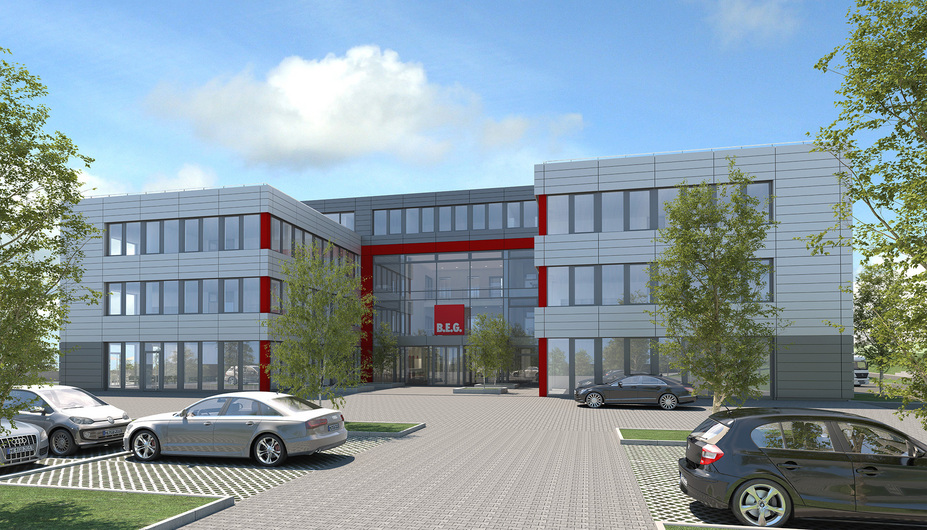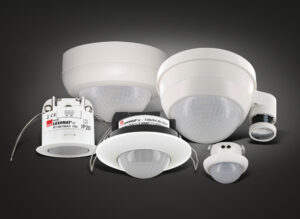
B.E.G. has made an example of how buildings can become more sustainable by turning its own headquarters in Germany into a ‘showcase for energy efficiency’.
The construction and operations of buildings is deemed one of the biggest ‘climate killers’ accounting for 38 percent of global emissions according to research.
But B.E.G. in Lindlar, has become a ‘trailblazer for sustainable buildings’ thanks to the installation of a new server solution and state-of-the-art NetX building automation systems technology. The tech incorporates geothermal heat pump, ventilation, photovoltaic system, blinds, lighting, access, and security areas to form a single automation system.
At Lindlar, the geothermal system is controlled via ModBus, the photovoltaic system via BACNet. Air quality, air-conditioning, shading, the control of the gate system and accesses are controlled via KNX, the lighting control via the in-house DALI-SYS. In the high-bay warehouse, a wireless system called Casambi is also used due to its flexibility.
Different communication protocols and bus systems such as Modbus, BACnet, KNX, DALI and Casambi become a functional unit under NetX via one simple router. Heating, shading, excluding unused areas, increasing security, all improve comfort at Lindlar.
B.E.G. employees have an individual access chip which opens and closes the access gate to the premises and activates the room air conditioning when a building area is opened.
In the offices, super-flat sensors are used to control the lighting and provide increased comfort. This changes the light colour during the day and helps support the natural biorhythm of the employees. In the dark winter months, the Human Centric Lighting (HCL) function ensures a fresh start to the day.
Special HVAC wall sensors not only control temperature but humidity too so fresh, oxygen-rich air is experienced in the office rooms. In the process, it measures the proportion of volatile organic components – VOCs for short – so adhesives and chemicals that are emitted from walls, floors and furniture which can lead to feelings of illness are removed.

Human exhalations such as the smell of sweat, sulphurous compounds, essential oils, perfume, hairspray, and deodorant are also VOCs. If there are too many of these VOCs in a room, it is automatically ventilated. The sensors are also used in the conference rooms of B.E.G. where many people spend long periods of time and where permanently fresh air increases the ability to concentrate and the sense of well-being.
Hygienic and particularly energy-saving lighting of the sanitary facilities is implemented via another sensor, called the Indoor 180-KNX-DX. It reacts to movements and then switches on the light. It also has a noise detection system. This means that it also detects a presence in individual cubicles. During periods of non-use, luminaires remain switched off.
By adjusting the BMS server via a KNX router in connection with a blind actuator and a KNX weather station, building automation at Lindlar can also be adjusted to the course of the sun. In this way, the climate is much more pleasant inside during the summer, while in winter the blinds provide additional thermal insulation.
A mixture of KNX, DALI and Casambi sensors are installed in the B.E.G. warehouse building. In the high-bay warehouse area, detectors with their excellent daylight-dependent regulation in combination with KNX sensors help to ensure that optimum lighting conditions are always available.
B.E.G. has also implemented an innovative lighting guidance system where light accompanies the user through the warehouse like a ‘cloud of light’.
Thanks to sensor coordination across groups and even lines, the light is fully activated in the area where the user is located. The surrounding areas dim to a fixed orientation light value. As a result, the user never has a completely dark area in their field of vision: all adjacent, visible aisles are illuminated with orientation light.
In all unused areas, the light is automatically switched off and energy is saved. All the different systems are controlled by a server located at each site and combined with a higher-level server installed in the administration building. This allows the greatest possible degree of fail-safety through the use of several controllers as well as a maximum degree of control at the same time, and this is location-independent. The user only needs an internet-capable end device (smartphone, tablet, notebook) with a pre-installed browser and a secure connection.
The German manufacturer insists the ‘path to climate neutrality is through building automation solutions’ which is an ‘investment in the future’. Paul Jones, Sales Director of UK & Ireland at B.E.G, also says these type of systems are vital to the world in achieving its ‘climate goals’. The UK currently aims to reach Net Zero by 2050.











